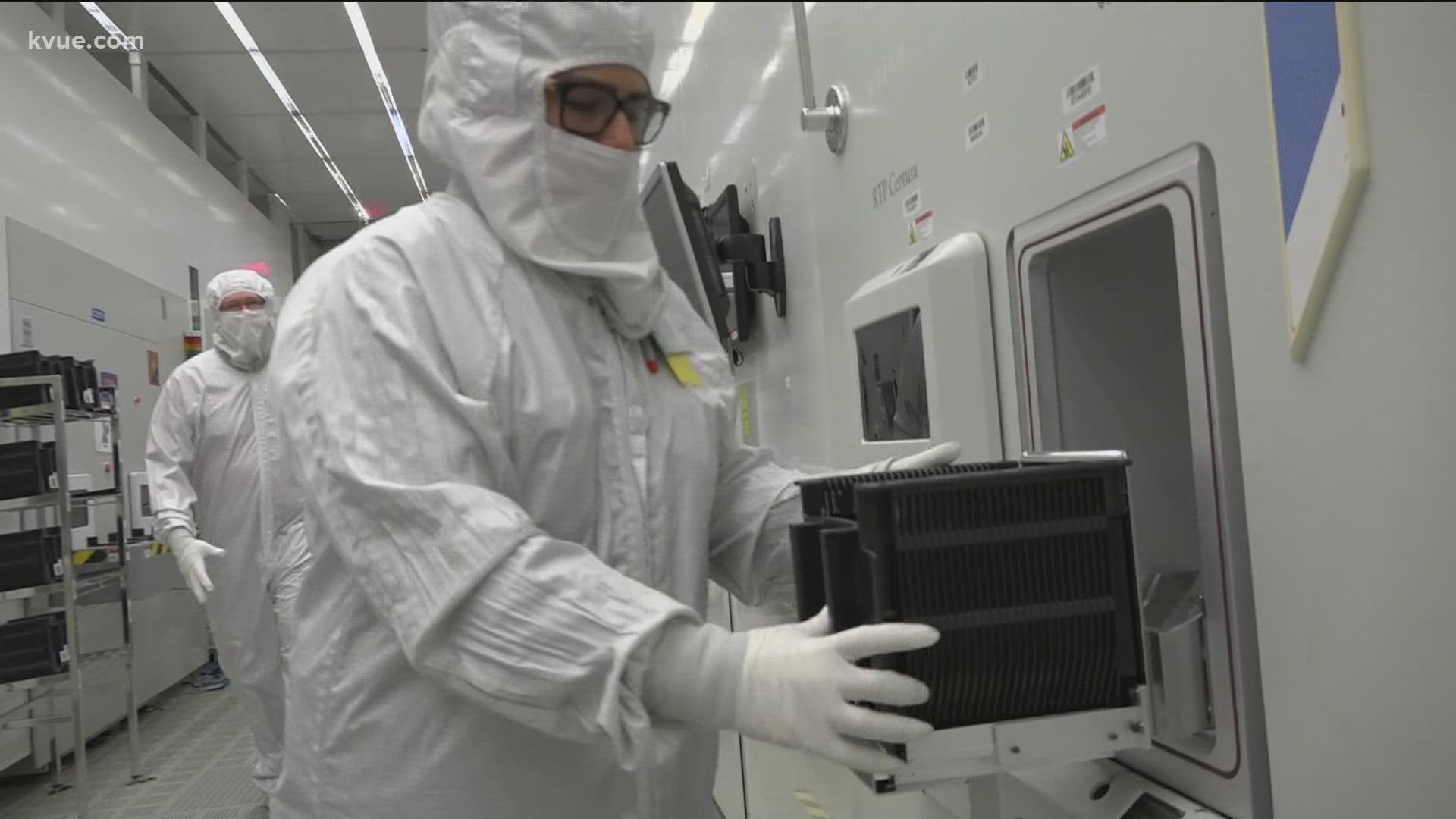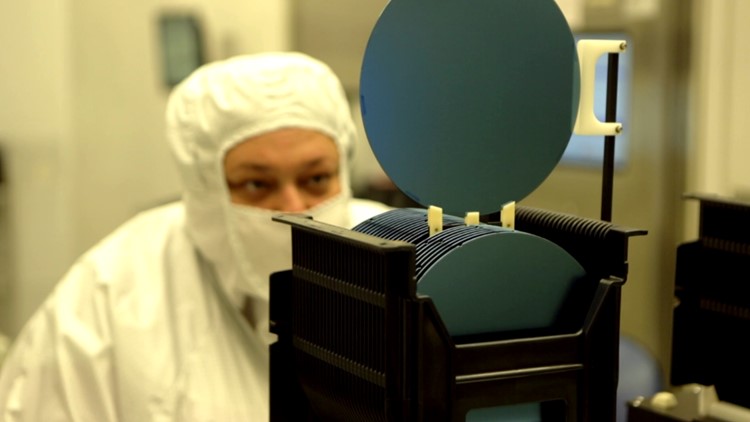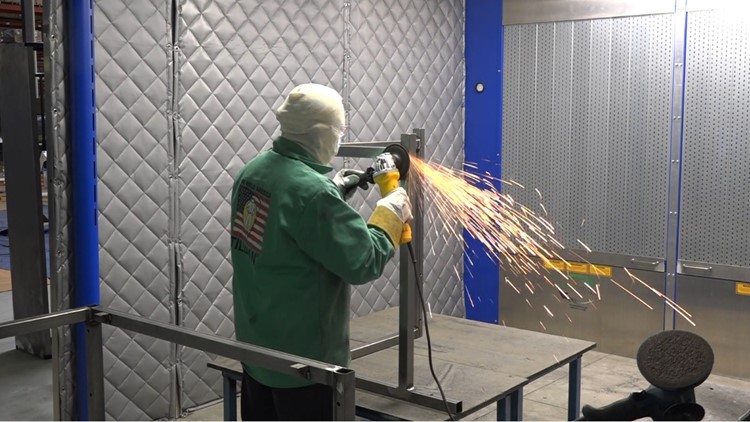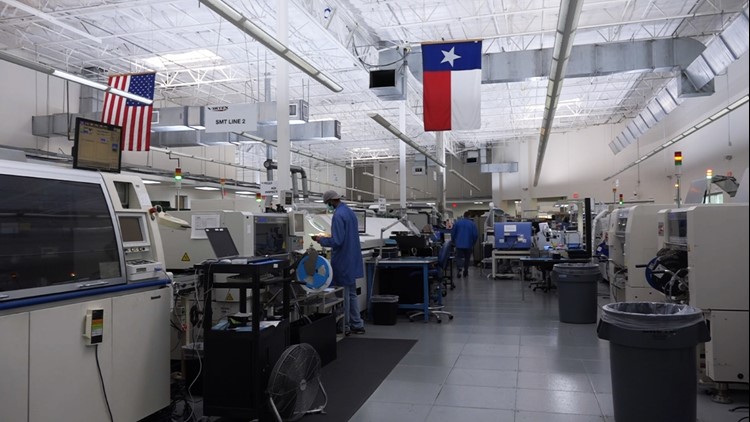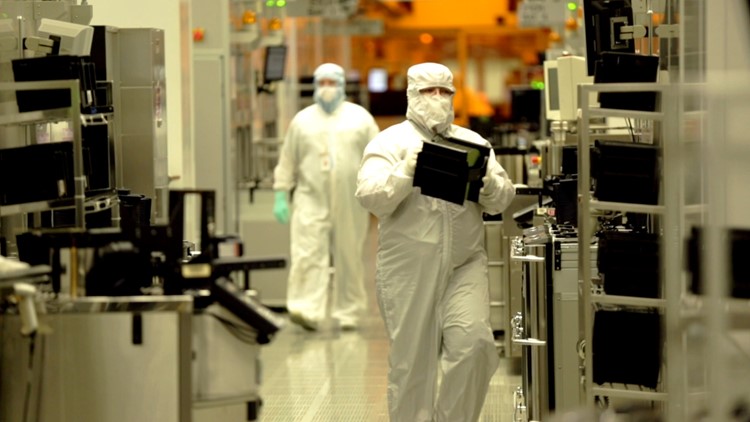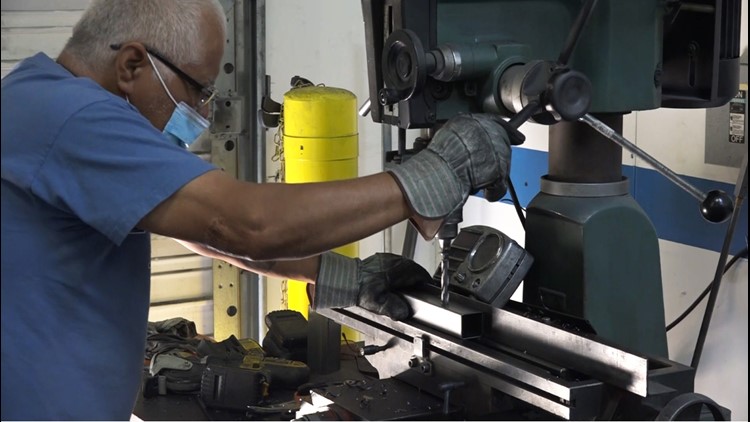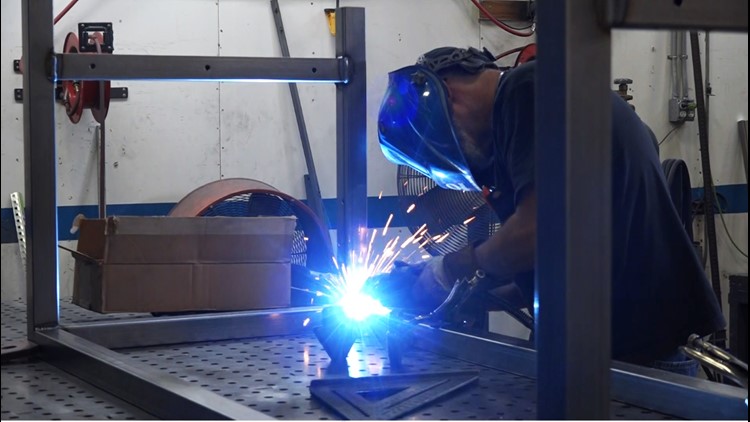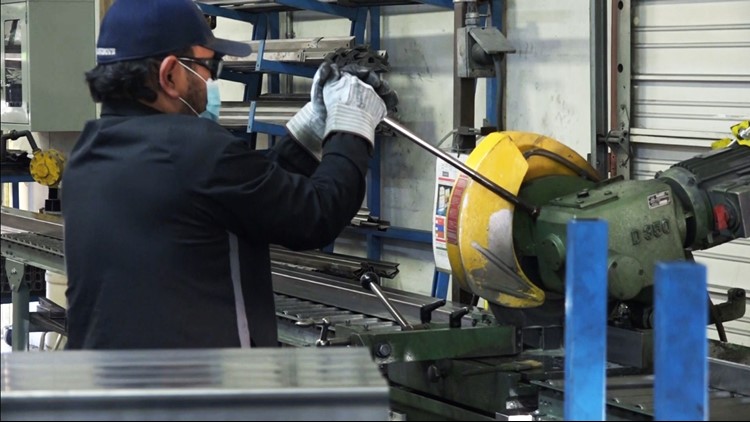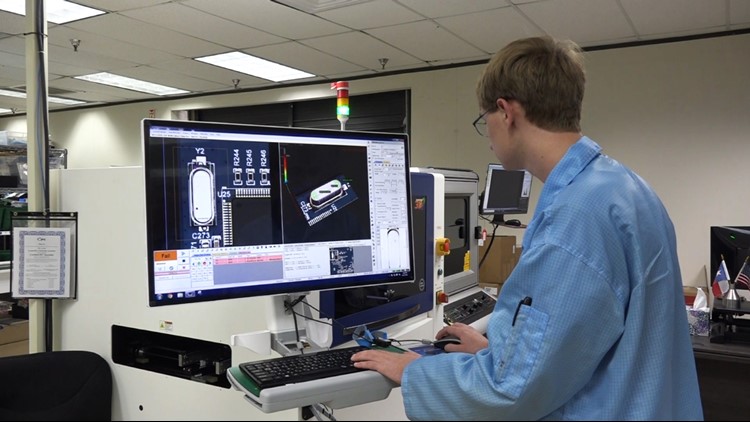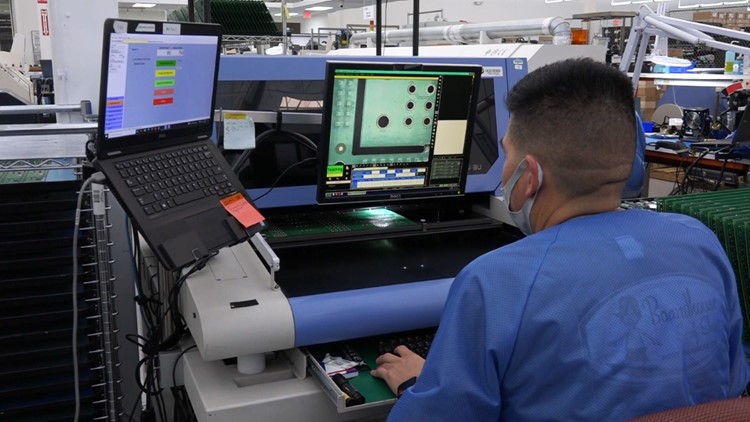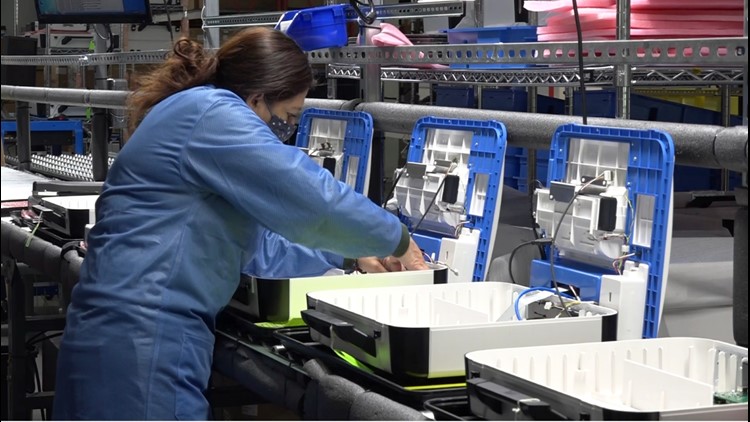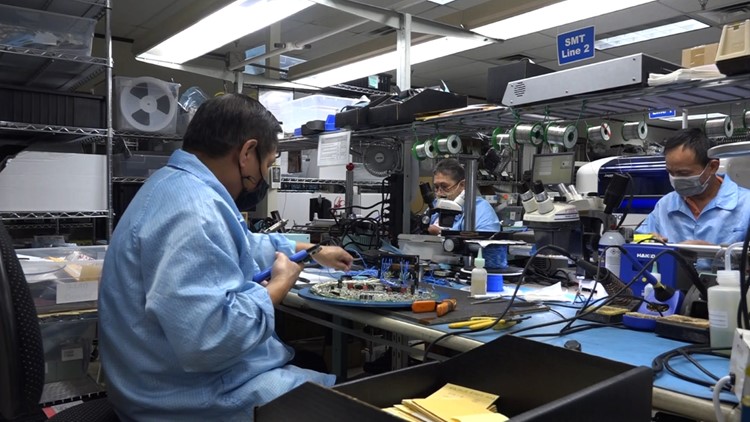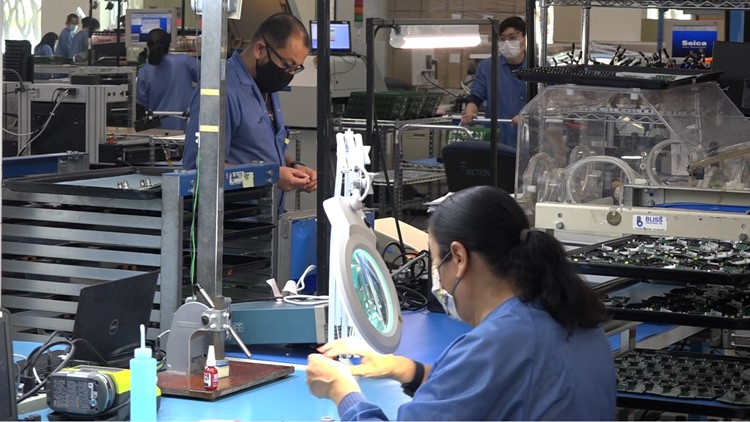AUSTIN, Texas — In the coming days, the U.S. Senate is set to announce the rules for a conference committee with about 100 members of Congress to hash out differences over a bill that would fund the CHIPS for America Act.
The bill has had many names, including Endless Frontiers, United States Innovation and Competition Act, and America COMPETES Act among a few. The bill would provide $52 billion in federal incentives to build semiconductor fabs in the U.S. A total of $39 billion will be set aside for manufacturing the chips while approximately $13 billion will fund research and development.
"This Texas Institute for Electronics is really an organization that has been set up to go after the CHIPS funding," Dr. S.V. Sreenivasan, who oversees TIE at the University of Texas, said.
TIE is just one organization aiming for research and development funding across the country. According to Congressman Michael McCaul, the U.S. used to produce between 30% and 40% of the world's semiconductors 30 years ago. Now, the U.S. only makes about 13%.
"There's a huge amount of churn that happens in this industry where things are progressing all the time and companies that don't quite get their research strategy right just fall apart, basically, because they fall behind," Sreenivasan said. "It's particularly true today because the industry is so big and so sophisticated that if you fall behind by two years, it's much harder to catch up today than it used to be, you know, 10 years ago. Right? And so the R&D is not something, like, esoteric that you're just doing at the university or some kind of science project. Right? It's very integral to the industry."
In the grand scheme of the industry, $52 billion won't cover the ground lost in the last three decades by the U.S., but it may be enough to jumpstart investment with companies like Infineon and Samsung in the Austin area.
What does manufacturing look like in Texas?
"When you're talking about the need for dozens more of these plants nationwide, and we've already seen almost a half a dozen new plants announced here in Texas alone that will go under construction over the next five to 10 years, $52 billion nationwide is not a lot in the scheme of things, but it will help tremendously," said Tony Bennett, who leads the Texas Association of Manufacturers.
"It's actually meaningful and I think it's a good portion of it or half of it is sustained beyond the so-called five-year window that they're looking at. I do believe it could be valuable," Sreenivasan said.
Research for semiconductors looks to make them more comprehensive than they already are. The most advanced chips can be as small as three nanometers square.
"What you could do is you could shrink the size of the transistor and it would make the transistor faster, it would consume less power, it would take smaller area, and that's why Moore's Law has been so great," Sreenivasan said. "That paradigm is running out, and so you have to go to some new ideas. And this is where 3D comes in."
The funding for the CHIPS Act will be part of the reformed bill that Representatives and Senators in the upcoming conference committee finalize. There are more than 100 conferees on the committee from the House and Senate.
PEOPLE ARE ALSO READING:

